Creator Campaings
Discover +10 Million creators across all industries and niches.
Get Al-Powered and activable insights around creator's profiles.
Manage influencers effortlessly at one place.
Reach out to millions of creators directly on the platform.
Social Media Insights
Favikon for Creators
Grow as a creator on social media
Grow
Get Noticed
Blogs Articles
Methodology & Rankings
About Favikon, rankings, tools & much more.
Methodology
The recipe behind Favikon's viral & coveted rankings.
Free tools to power your influencer marketing workflows.
The people & mission that fuels Favikon.
Get access to all Favikon rankings.
Become a select Favikon Partner
Become a select Favikon Affiliates
Featured Rankings
Highlighting the most influential creators on X, shaping global conversations and trends
Showcasing top creators in the sales niche, driving innovation and engagement across the U.S.
Recognizing global leaders on LinkedIn for their impactful thought leadership and professional insights.
The place to talk creator economy, together


How to Develop an Influencer Brief That Gets Results
A strong influencer brief is the key to a successful collaboration. This guide walks you through how to create a clear, effective brief that aligns your goals with the influencer’s creativity, ensuring better content and stronger results.

.png)

Josie Renna is a content strategy expert with a passion for helping creators navigate the ever-evolving digital landscape. Specializing in effective content creation techniques and platform-specific strategies, Josie provides insights to empower creators and brands to thrive online. With a deep understanding of algorithm dynamics and audience engagement, Josie shares actionable tips for optimizing content performance across various platforms.
Check Brand DealsHow to Develop an Influencer Brief That Gets Results
Creating an effective influencer brief is the foundation of any successful influencer marketing campaign. A well-crafted brief serves as the roadmap that guides creators toward producing content that aligns with your brand objectives while maintaining their authentic voice. According to recent industry data, campaigns with comprehensive briefs see 73% higher engagement rates compared to those with minimal guidance.
Understanding the Purpose of an Influencer Brief
An influencer brief is more than just a list of requirements; it's a strategic communication tool that bridges the gap between your brand's vision and the creator's execution. As Sarah Johnson, VP of Influencer Marketing at Bazaarvoice, explains: "The best briefs provide clarity without stifling creativity. They give influencers the context they need to create authentic content that resonates with their audience while achieving brand objectives."
The primary purpose of an influencer brief is to establish clear expectations, provide essential campaign information, and empower creators to produce their best work. Research from Social Native shows that campaigns with detailed briefs are 2.3 times more likely to meet or exceed their KPI targets.
Essential Components of a High-Converting Influencer Brief
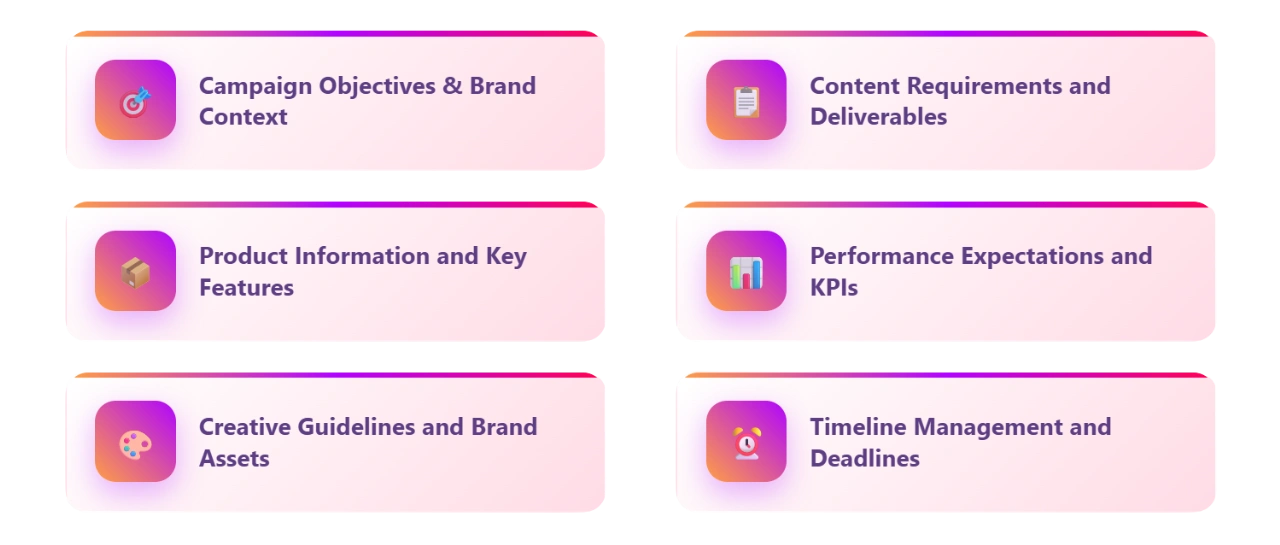
Campaign Objectives and Brand Context
Start your brief by clearly articulating your campaign goals and providing comprehensive brand context. This includes your brand's mission, values, target audience demographics, and the specific objectives you want to achieve through the partnership.
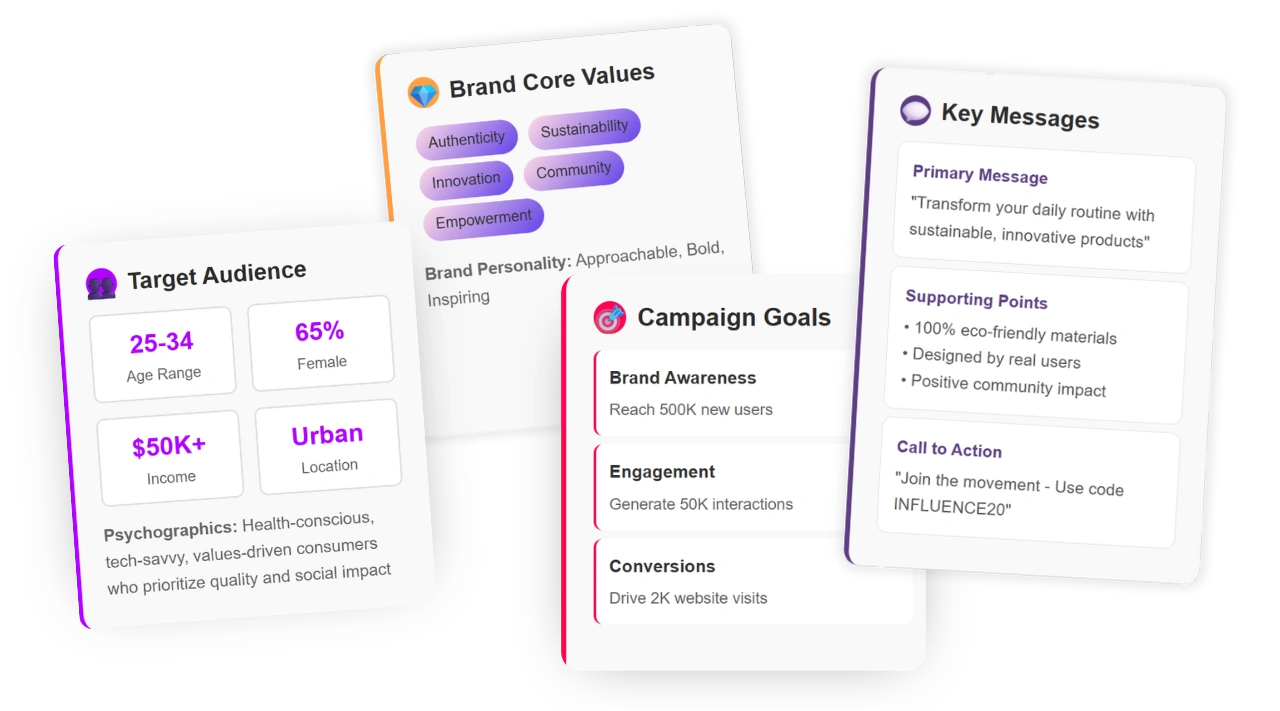
According to Later's influencer marketing research, campaigns that include detailed brand context see 45% higher brand recall among audiences. Include information about:
- Your brand's core values and personality
- Target audience demographics and psychographics
- Campaign-specific goals (awareness, engagement, conversions)
- Key messages you want to communicate
Product Information and Key Features
Provide comprehensive details about the product or service being promoted. This should include features, benefits, unique selling propositions, and any specific aspects you want highlighted. Industry expert Marcus Chen, Director of Creator Partnerships at Sprout Social, notes: "Influencers who understand the product deeply create more compelling and authentic content. The brief should answer every question they might have about what they're promoting."
Creative Guidelines and Brand Assets
While maintaining creative freedom is crucial, providing clear guidelines helps ensure brand consistency. Include:
- Brand colors, fonts, and visual style preferences
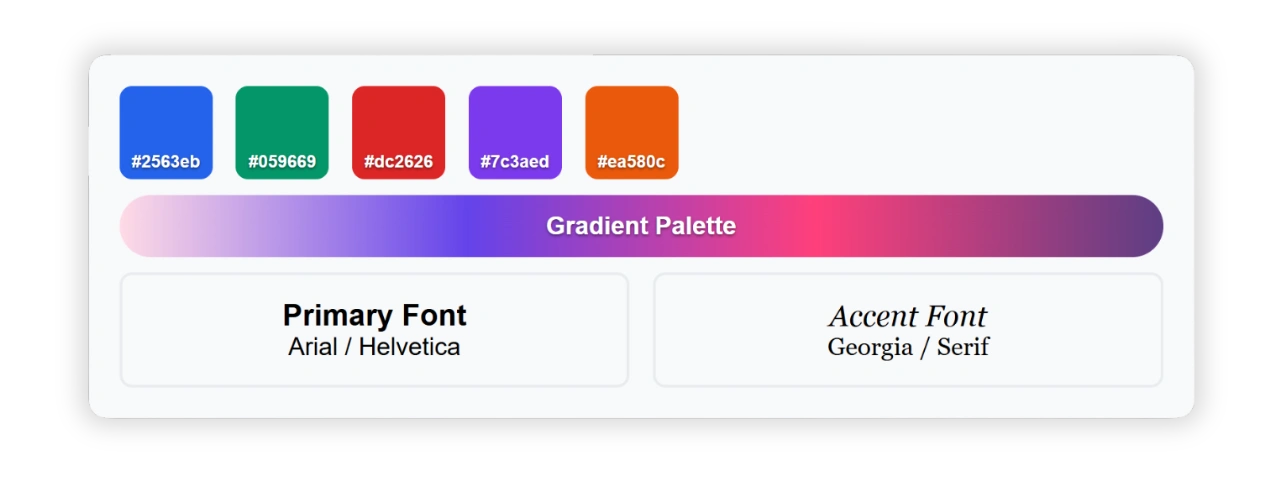
- Logo files and usage guidelines
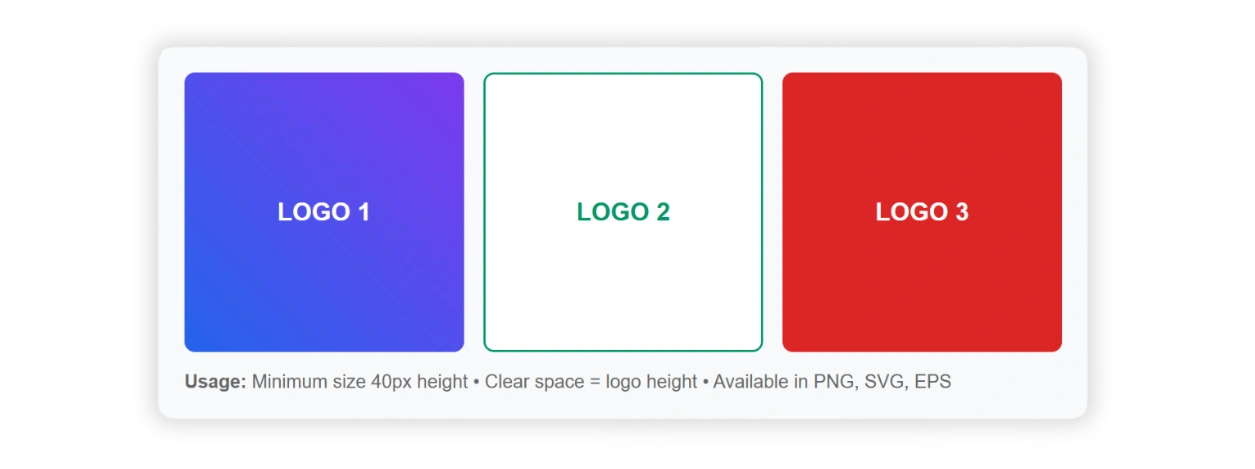
- Examples of previous successful content
- Do's and don'ts for brand representation

Research from InBeat Agency indicates that campaigns with visual brand guidelines see 38% better brand recognition in post-campaign surveys.
Content Requirements and Deliverables
Specify exactly what content you expect, including:
1. Number of posts required
Define the exact quality and distribution of content pieces across the campaign duration.
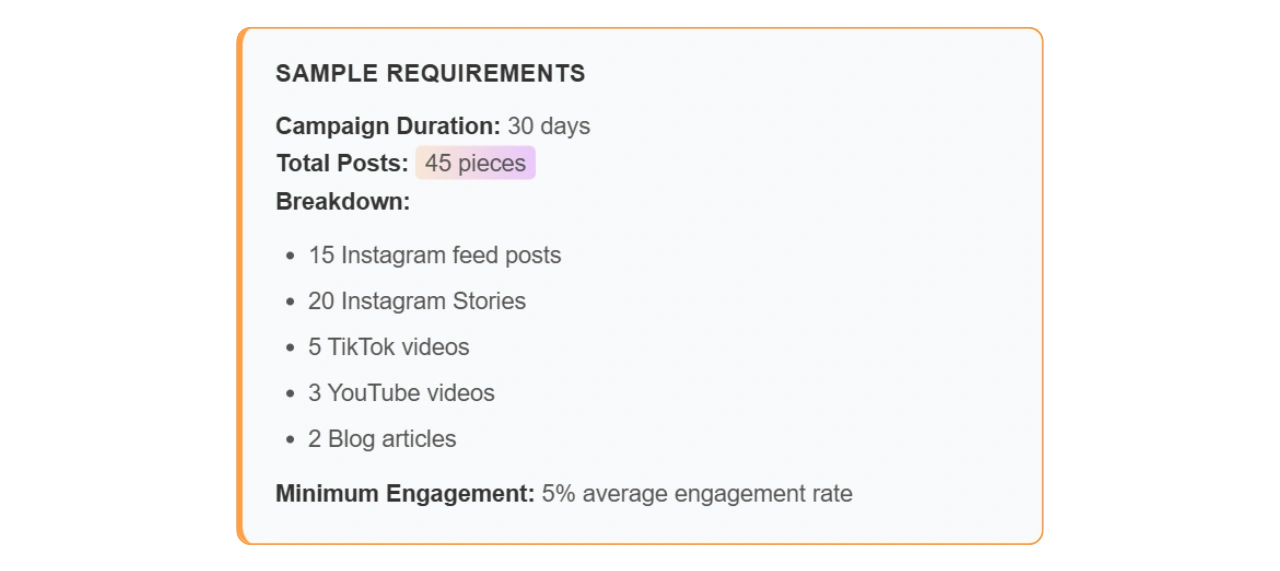
2. Platform specifications (Instagram Stories, TikTok videos, YouTube content)
Details requirements for each social media platform, including dimensions, duration, and format.
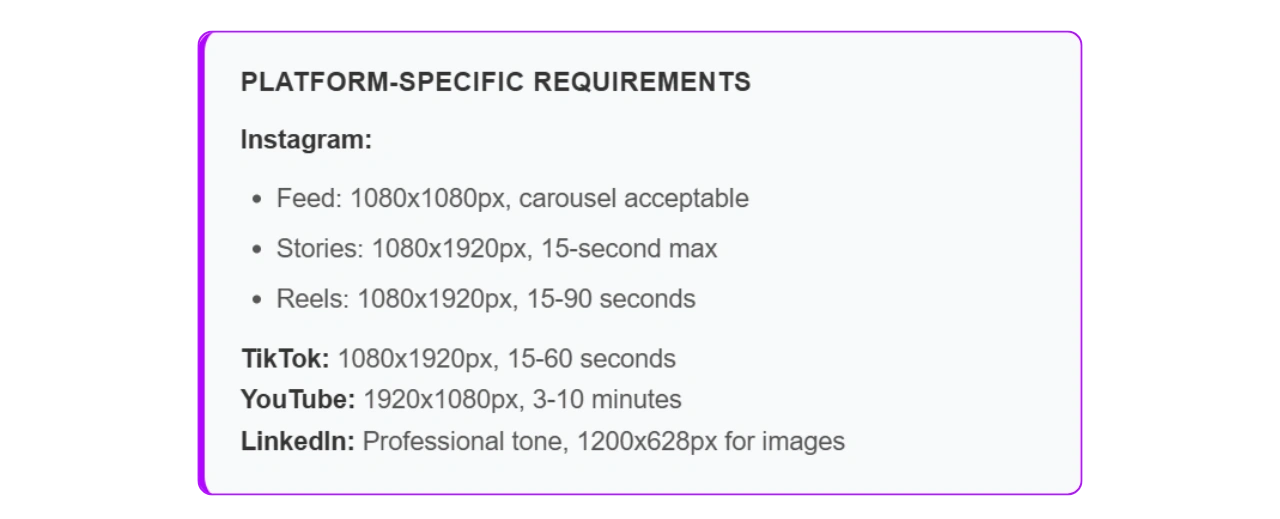
3. Content format preferences
Specify the style, tone, visual elements, and content structure requirements.
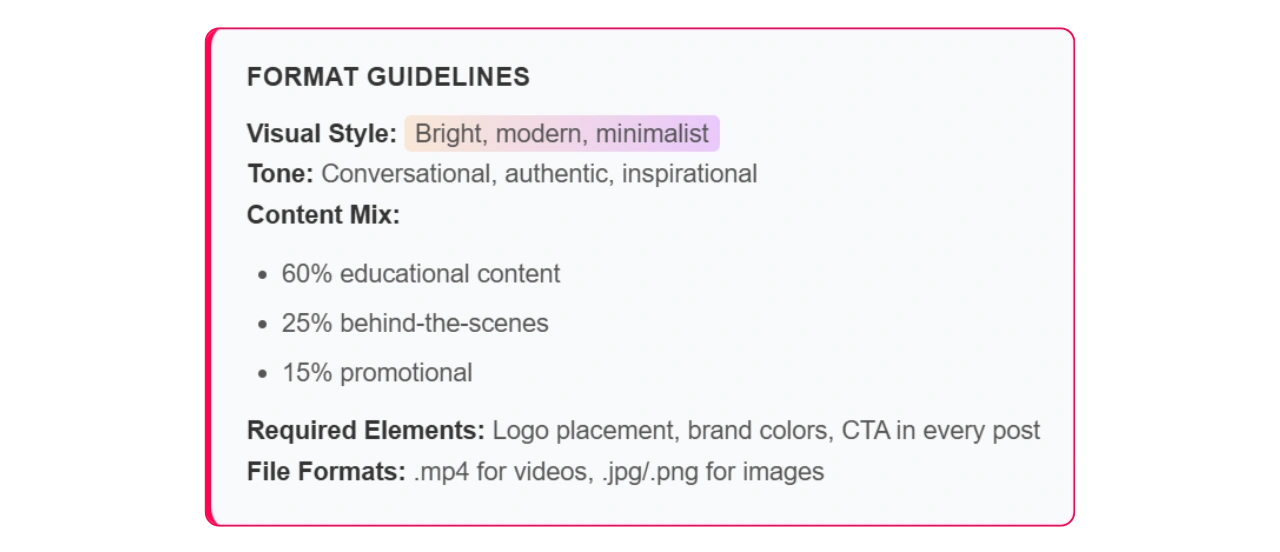
4. Posting schedule and timing requirement
Define when and how frequently content should be published for optimal engagement.

5. Hashtag requirements and mentions
Specify branded hashtags, mention requirements, and hashtag strategy for maximum reach.

Performance Expectations and KPI
Clearly outline how success will be measured. This transparency helps influencers understand what constitutes a successful partnership and allows them to optimize their content accordingly. Include metrics such as:
Engagement rate targets
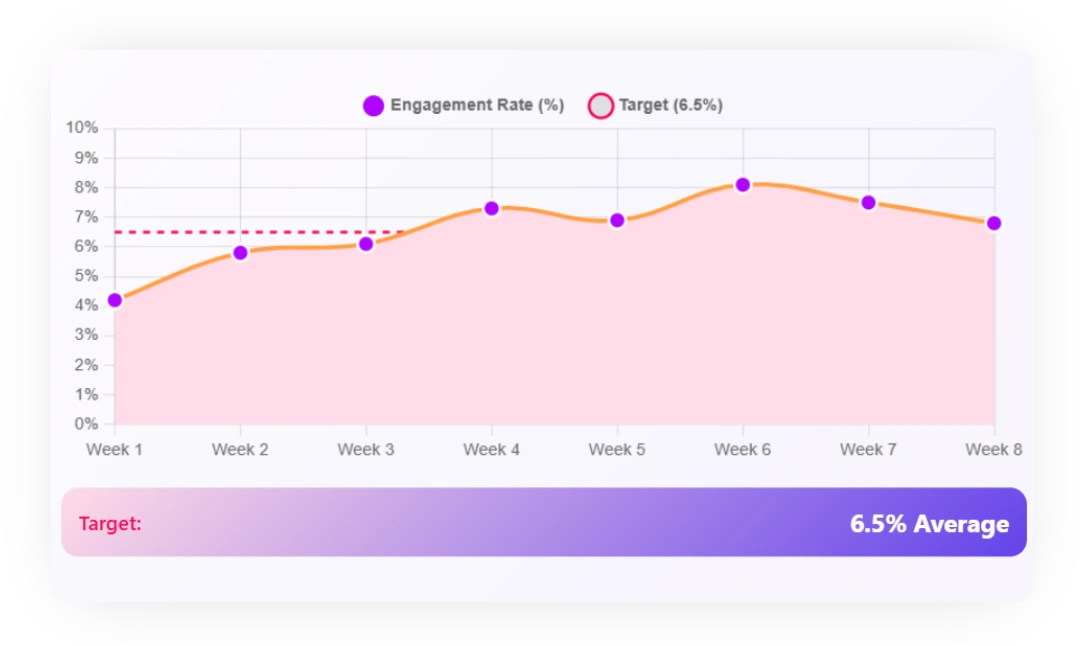
Reach expectations
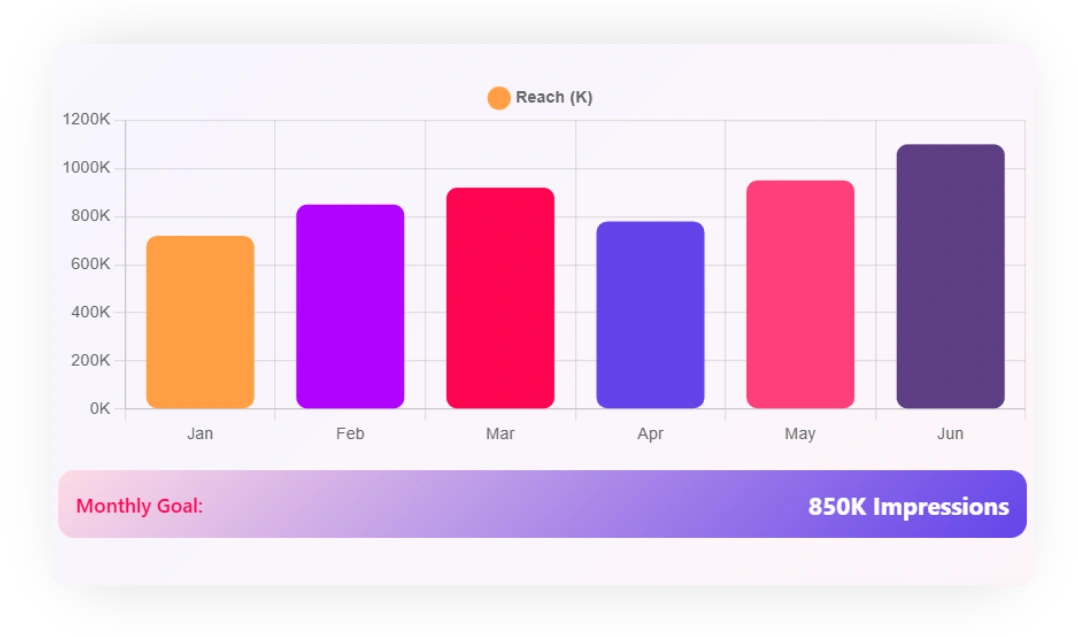
Click-through rates
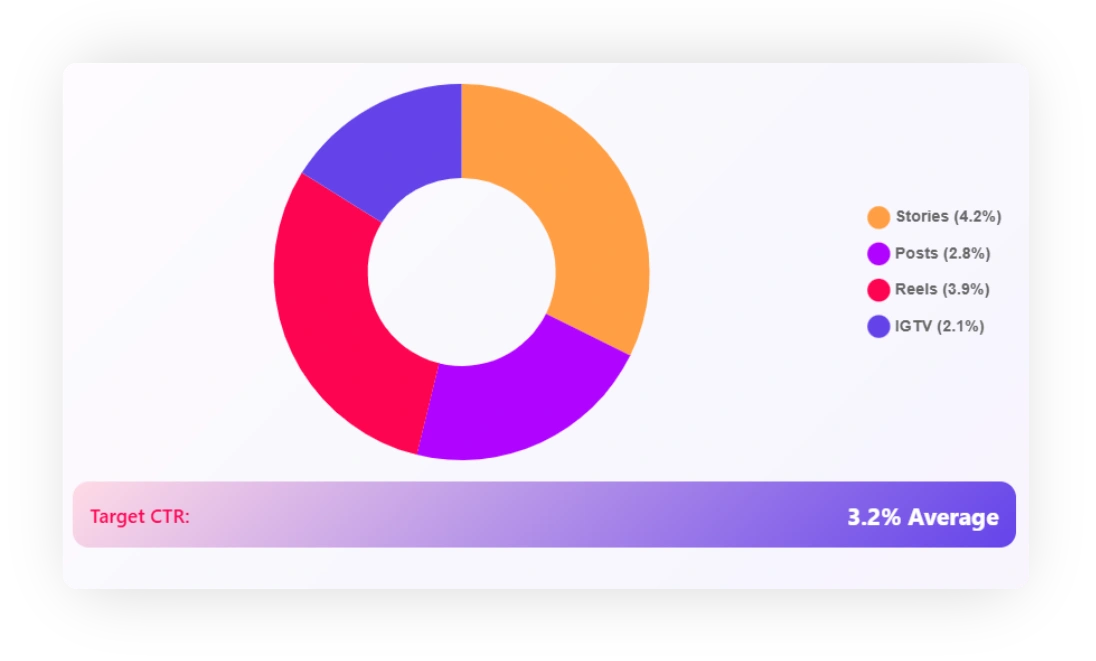
Conversion goals
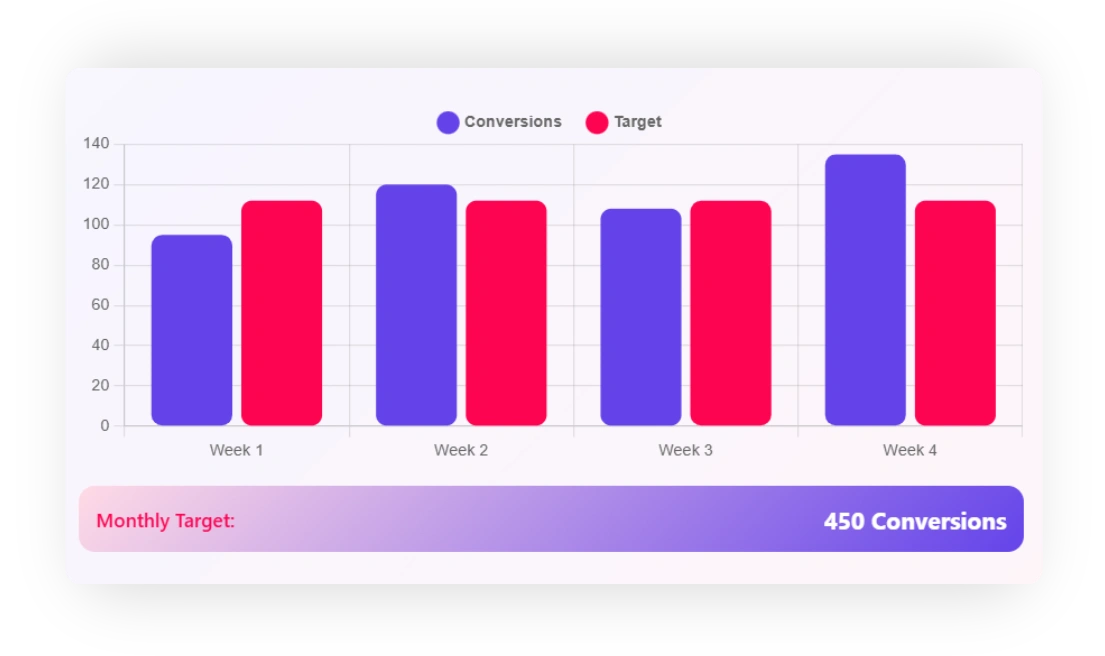
Balancing Creative Freedom with Brand Requirements
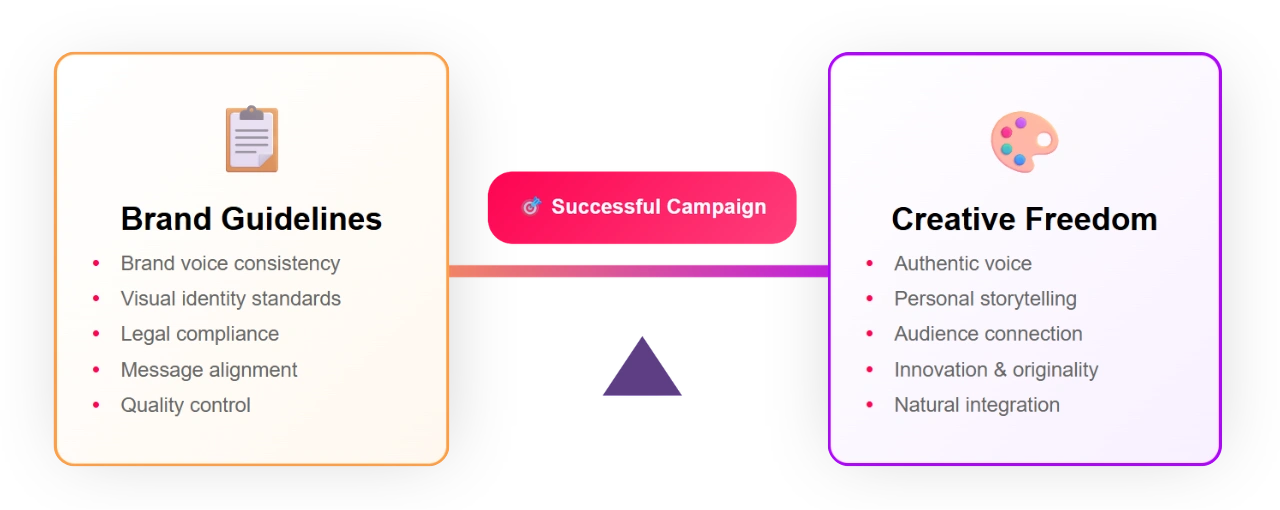
One of the biggest challenges in influencer brief development is striking the right balance between providing necessary guidance and allowing creative freedom. Data from Sprout Social's 2024 Influencer Marketing Report shows that 67% of successful campaigns give influencers significant creative control while maintaining clear brand guidelines.
The Creative Freedom Framework
Implement a tiered approach to creative control:
Must-Have Elements: Non-negotiable brand requirements such as logo placement, key messaging, and compliance requirements.
Should-Have Elements: Preferred approaches that align with brand strategy but allow for interpretation.
Could-Have Elements: Suggestions and inspirations that influencers can choose to incorporate or adapt.
As Jessica Rodriguez, Head of Influencer Strategy at Later, explains: "The most successful briefs feel like a collaboration invitation rather than a rigid instruction manual. When influencers feel trusted to bring their creativity to the table, the content feels more authentic to their audience."
Communication and Feedback Protocols
Establishing Clear Communication Channels
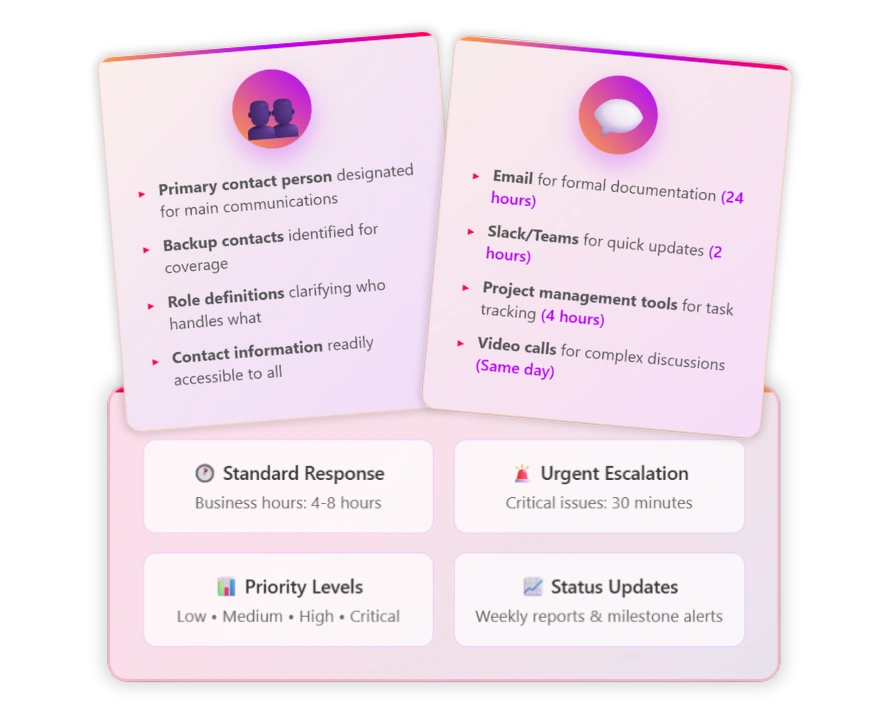
Set up efficient communication protocols from the start. This includes:
- Primary contact person and backup contacts
- Preferred communication methods (email, Slack, project management tools)
- Response time expectations
- Escalation procedures for urgent matters
Feedback and Approval Processes
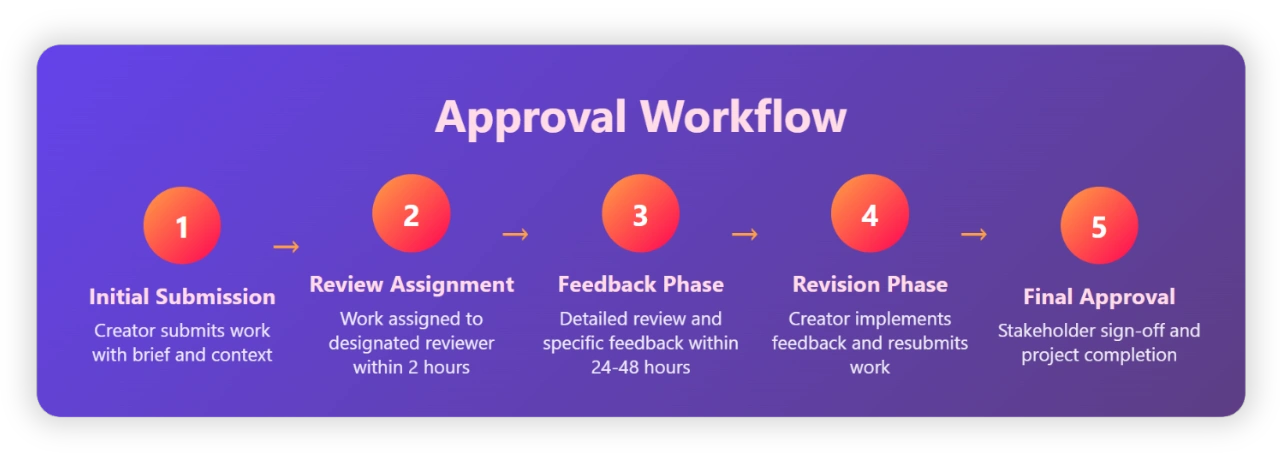
Create a streamlined approval process that respects both brand standards and creator timelines. Industry best practices suggest:
- Maximum 48-hour turnaround for feedback
- Specific, actionable feedback rather than vague requests
- Clear approval stages and decision-makers
- Contingency plans for revisions
Timeline Management and Deadlines
Effective timeline management is crucial for campaign success. According to Bazaarvoice's influencer marketing study, campaigns with realistic timelines see 52% fewer revisions and delays.
Creating Realistic Timelines
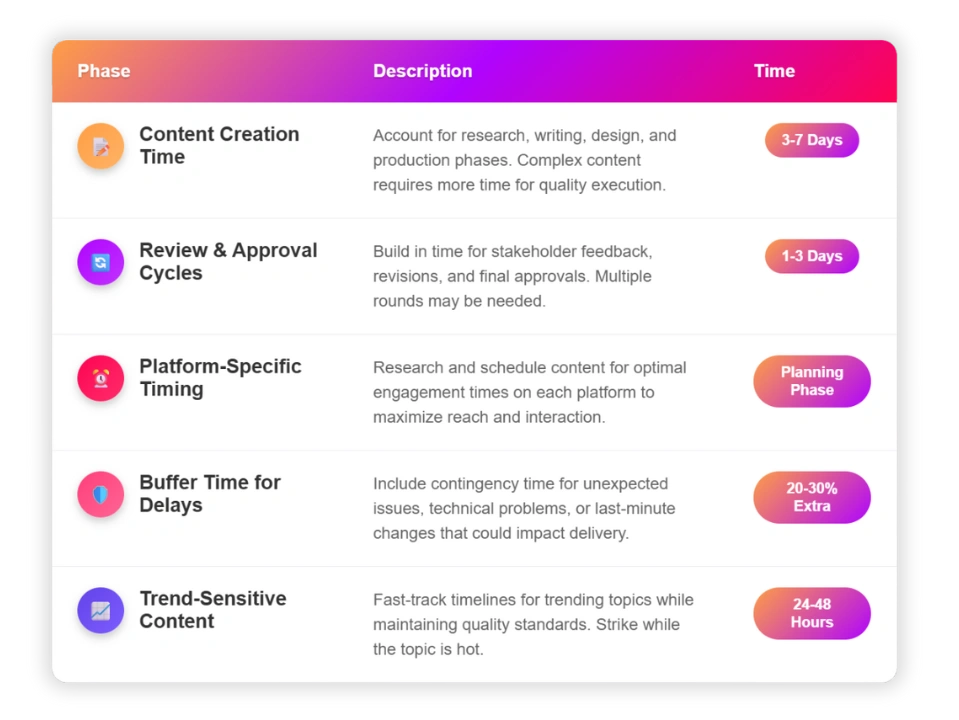
Measuring Brief Effectiveness
Track the success of your briefs through:
- Time to content delivery
- Number of revision rounds required
- Final content quality scores
- Campaign performance metrics
- Influencer satisfaction surveys
Data shows that brands using brief effectiveness metrics improve their campaign performance by an average of 34% over six months.
Common Pitfalls to Avoid
Over-Specification
Avoid micromanaging every aspect of content creation. Research indicates that overly prescriptive briefs reduce content authenticity by up to 41%.
Under-Communication
Insufficient information leads to misaligned expectations and poor results. Ensure your brief answers the "who, what, when, where, why, and how" of your campaign.
Ignoring Platform Nuances
Each social media platform has unique characteristics. Tailor your brief requirements to match platform-specific best practices and audience behaviors.
Conclusion
Developing an influencer brief that gets results requires a strategic balance of clear communication, creative freedom, and performance focus. By implementing the frameworks and best practices outlined in this guide, brands can create briefs that inspire authentic, high-performing content while building strong, long-term relationships with creators.
The key to success lies in treating your brief as a collaborative tool rather than a rigid instruction set. When influencers feel empowered and informed, they create content that not only meets your objectives but exceeds your expectations.
Also See 👀
🏆HOW TO SPOT FAKE FOLLOWERS AND ENGAGEMENT ON SOCIAL MEDIA
LAUNCH AND MANAGE INFLUENCER CAMPAIGNS WITH EASE
HOW DOES FAVIKON RANK INFLUENCERS?
Related Articles
See all the articles
Find, analyze, and contact top influencers from a 10M+ creator database on Instagram, Linkedin, Youtube, Tiktok, and X to grow your business.
Favikon is an influencer marketing sofware. We are not affiliated, associated, endorsed by, or in any way officially connected with the Tiktok, Youtube, LinkedIn or Instagram brand, or any ot ifts subsidiaries or its affliates. The names "Tiktok", "Youtube", "LinkedIn" and "Instagram" as well as related names, marks, emblems and images are registered trademarks of their respective owners.
Copyright © 2025 Favikon | All Rights Reserved















